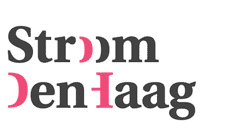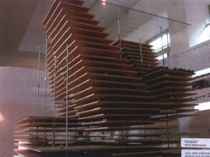MVRDV - 3D City
The awareness of the growing megacities becomes more and more apparent. And the attention for the city revitalised at the end of the millennium due to the new economies. This new financial world addresses itself with the cities due to its technical, social and cultural densities.How to bring this process one step further? How to enlarge its possibilities? How to go beyond the two-dimensional backgrounds and to make the step towards a 3d urbanism that would multiply the potential of the city? How to organise this 3d world? How to live or -as some might say- how to survive in the 3rd dimension? What logistics will lead to this 3d city, what infrastructure can allow for it? And finally: is there then a certain new ‘idealism' again in this aspiration?
In order to give these questions a possible framework, the KM3/The 3d city-study is based on a theoretical city of 1 Million inhabitants, based on Dutch statistics. In order to study the constraints for a sustainable direction, this city is autarctic. It is compact, a cube. How big should this cube be? Does it still compactize substantially the 2D city? And -in the end- is this a promising direction?
In order to understand this potential and to quantify the needs for this city and in order to avoid an over-complexity, BIR's initial studio studied a series of selected functions within this city. What parameters describe these functions? How many cubic meters does every function need? How to distribute it? What possibilities or changes will a 3d city give to this sector?
10 sectors have been studied as an upbeat to the ultimate 3d city study: Mixmax, carried out by 7 students during their thesis work at BIR on the basis of this research during 2001 and 2002.
Research and Design : Berlage Institute Rotterdam
with
: Arman Akdogan, Diego Barajas, Charles Bessard, Im Sik Cho, Juan-Pablo
Corvalan, Brent Crittenden, Luis Falcón, Deval Gandhi, Camilo Garcia
Barona, Esther Giani, Pablo Guerrero, Hugo Hardy, Emiko Hayakawa,
Tsugimi Kanno, Sung-woo Kim, Aureliusz Kowalczyk, Irene Lund, Felix
Madrazo, Martin Mutschlechner, Satoko Oba, Shinya Okuda, Ana Rascovsky,
Marisol Rivas Velazquez, Manuel Rivero Ruiz, Nanne Ru, Alexander
Sverdlov, Junko Tamura, Kimihiko Tanaka, Sabina Tattara, Jacopo Tenani,
Rintaro Yabe, Tomohiro Yanagisawa, Petar Zaklanovic, Juan Zapata
Tutors : Winy Maas, Wiel Arets and Herman Kerkdijk
Made possible by : Berlage Institute Rotterdam
First shown : Berlage Institute Rotterdam, January 29, 2001



















